Eczema infograhics
The following infographics have been developed to help people manage their eczema well. They have been developed as part of the Allergy 250K youth project and the Nip allergies in the Bub project.
Top tips for managing eczema
Medicated creams and ointments
- Moisturise every day, even when there is no eczema
- Use prescribed topical steroids as directed by your doctor or nurse practitioner when there is eczema
- Moisturisers containing common allergy causing foods such as cow’s milk, goat products and nut oils
- are not recommended
Bathing
- Bath or shower once a day where possible
- Gently remove any eczema crusts while in the bath – this will allow the prescribed topical steroids to work better
- Avoid soap products and bubble bath as they dry the skin
- Also avoid products which contain perfume or fragrance as they can irritate the skin
- Use a shampoo for sensitive skin when washing hair
Triggers
- Avoid overheating – children with eczema get hot quickly and this can make eczema more itchy
- Try not to overdress children – 100% cotton clothing is preferred
- Avoid heavy blankets and quilts on the bed – soft cotton or silk sheets are recommended and
- a thin cotton blanket or a lightweight sleeping bag in cooler weather
- Where possible, do not have heaters in bedrooms
- Keep fingernails short and clean – this can help prevent damage to skin from scratching
- Remove prickly materials such as clothing tags if the child’s skin is affected by them
Topical steroids
Topical steroids help to settle irritation and itch on the skin and help reduce eczema flares (redness and itch).
When and where should I use topical steroids?
Apply topical steroids (as prescribed) as soon as you see any areas of eczema (red, inflamed, rough areas),
and apply it to all the eczema affected areas, not just the worst bits. It should also be used on broken skin.
How much do I use?
- It can be hard to know how much topical steroid to apply to an area. If you apply too little, it may not work.
- Apply enough topical steroid to cover all the eczema affected areas. Fingertip unit amounts can help.
- One fingertip unit is enough to cover an area of skin twice the size of a flat adult hand with the fingers together. For example, if the area of skin to be treated is the size of four flat adult hands, two fingertip units of topical steroid should be applied each time.
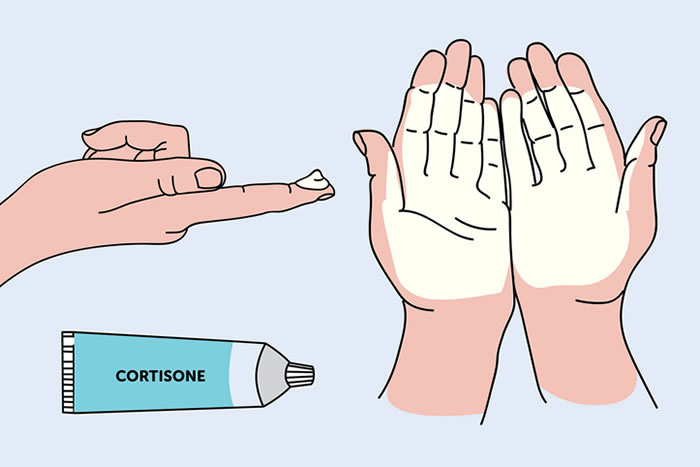
- Once a day is often enough. Continue applying once a day until the eczema has completely gone (the skin is smooth, not red and not itchy), or as advised by your treating health professional. If treated correctly, the eczema should clear within 1-2 weeks, in most cases.
How much moisturiser should I be using?
Probably more than you think! Each week, aim to use the following amounts:
- 125g for baby
- 250g for small child
- 500g for bigger child or teenage
Eczema information and infograhics for teens and adults
For eczema information for teens and adults, visit the Allergy 250K yout project websites.
https://teen.250k.org.au/eczema/
https://ya.250k.org.au/eczema/
![]() Bleach Baths Teens and Adults Instruction Sheet665.56 KB
Bleach Baths Teens and Adults Instruction Sheet665.56 KB
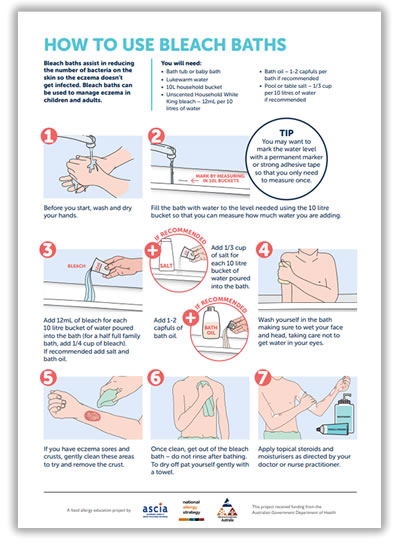
![]() Wet Dressings Teens and Adults Instruction Sheet677.40 KB
Wet Dressings Teens and Adults Instruction Sheet677.40 KB
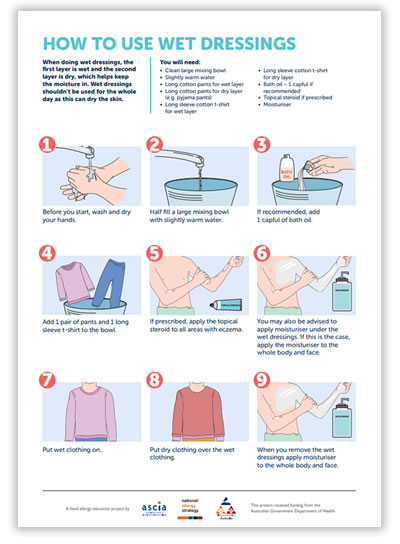
Top tips for managing eczema in children
![]() Top Tips for MANAGING ECZEMA in a child313.37 KB
Top Tips for MANAGING ECZEMA in a child313.37 KB
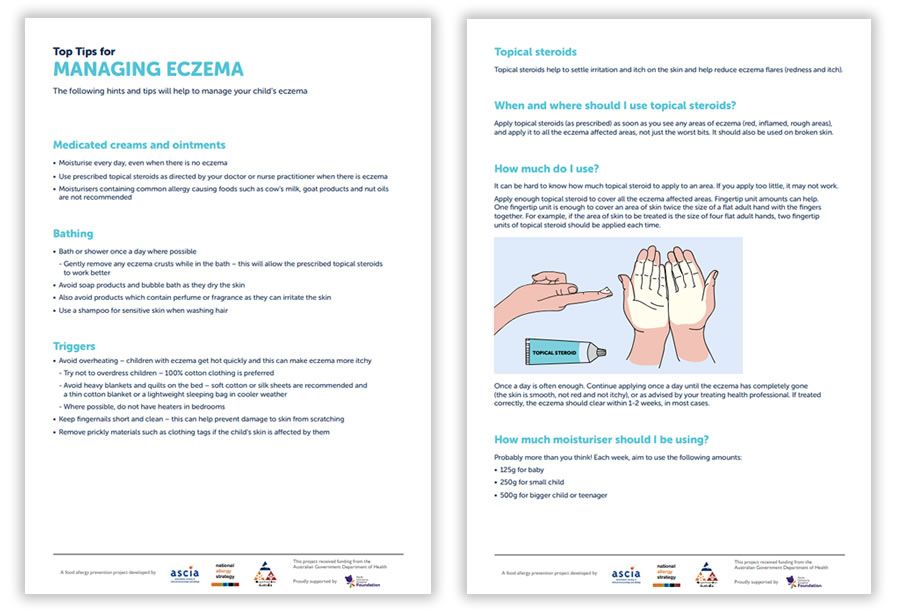
Nip allergies in the Bub eczema infographics for babies
https://preventallergies.org.au/helpful-tools/eczema-resources/
![]() How to use bleach baths803.80 KB
How to use bleach baths803.80 KB
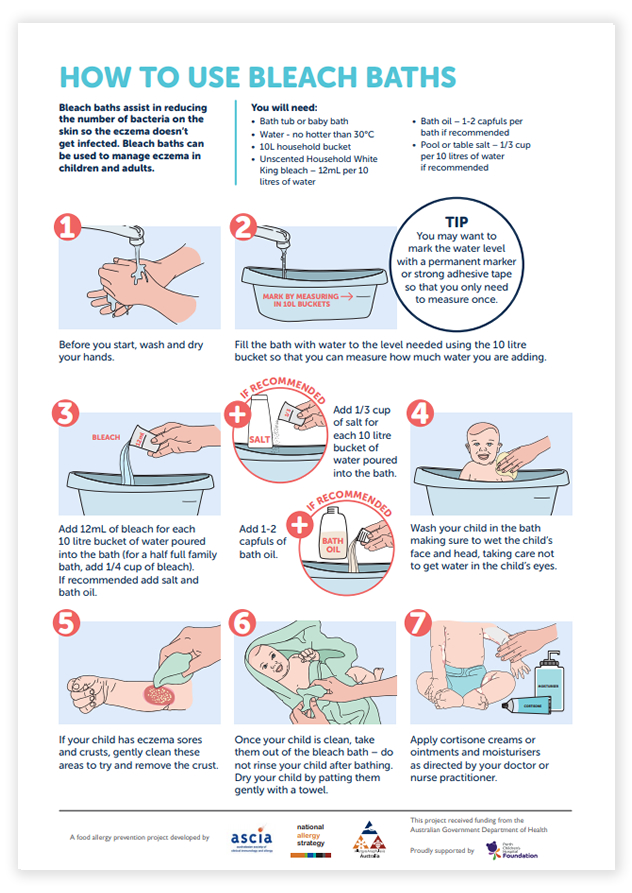
![]() How to use wet dressings778.58 KB
How to use wet dressings778.58 KB
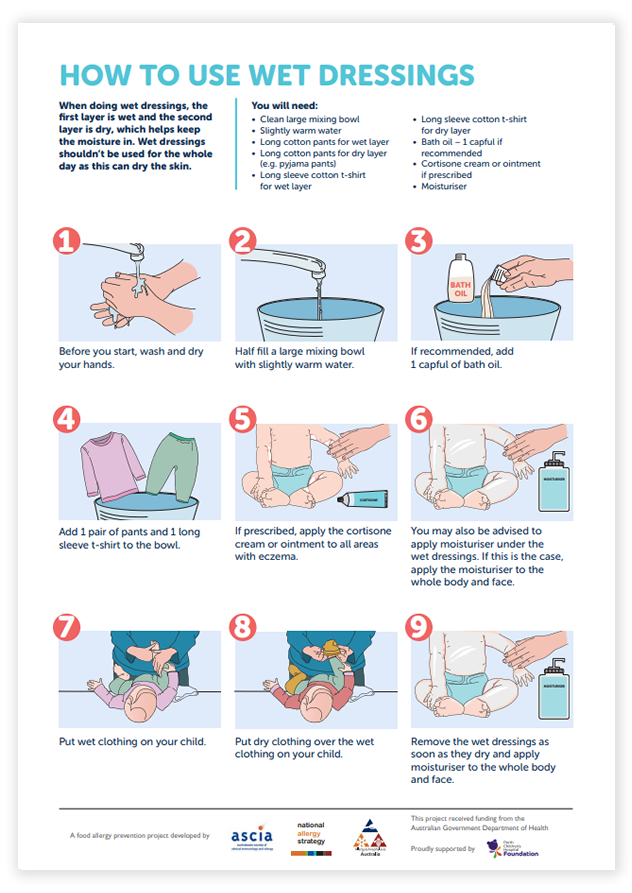
![]() How to use tubular dressings912.34 KB
How to use tubular dressings912.34 KB
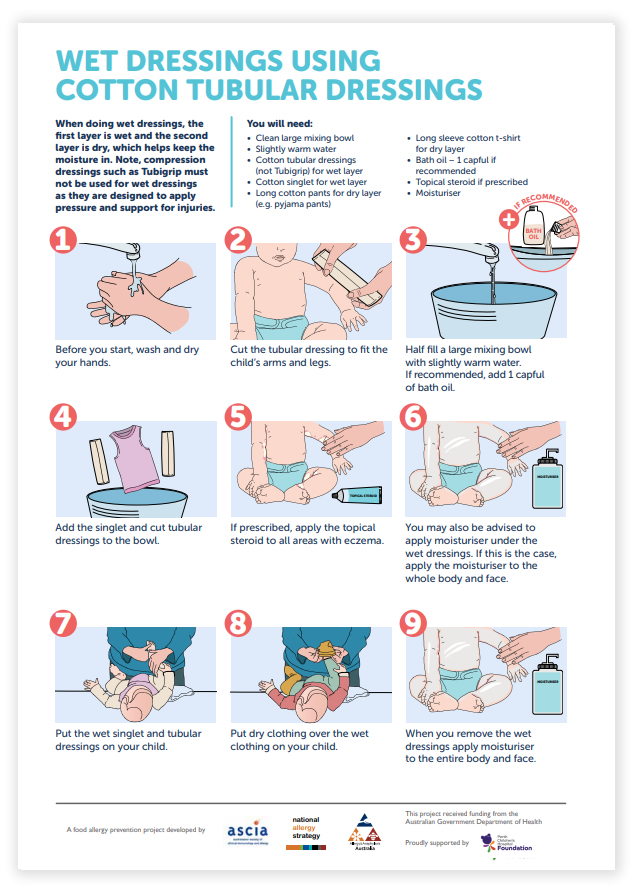
250K eczema infographics for children
https://teen.250k.org.au/eczema/
https://ya.250k.org.au/eczema/
![]() How to use bleach baths for children753.07 KB
How to use bleach baths for children753.07 KB
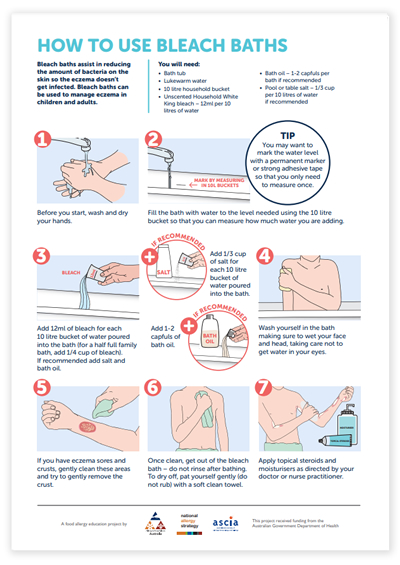
![]() How to use wet dressings for children677.43 KB
How to use wet dressings for children677.43 KB
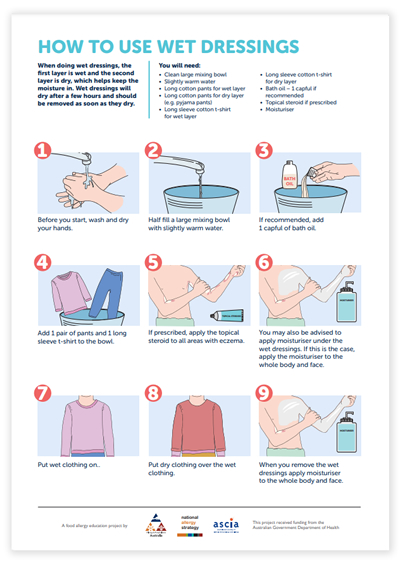
These resources have been developed with funding from the Australian Government Department of Health.
Content updated March 2022

